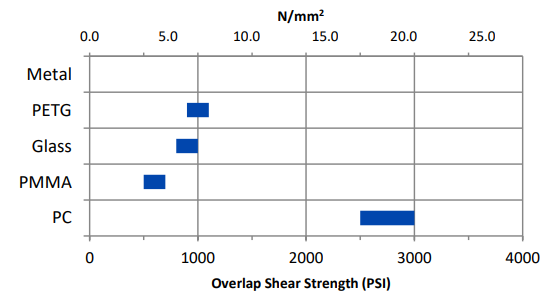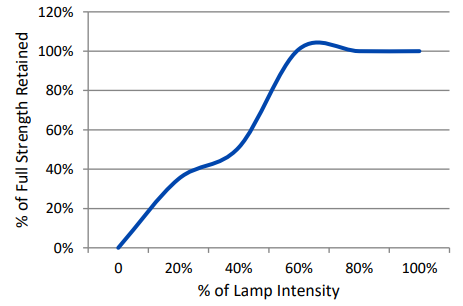Enhanced TDS
Identification & Functionality
- Chemical Family
- Product Type
- Technologies
- Product Families
Features & Benefits
- Ready-to-Use Product Features
Applications & Uses
- Markets
- Applications
- Compatible Substrates & Surfaces
- Cure Method
- General Instructions
Surfaces to be bonded should be clean and dry. Dispense a drop or drops to one surface only. Apply only enough to leave a thin film layer after compression. Press parts together and expose to UV dose when ready. An adequate bond should develop rapidly, depending on UV dose efficacy, and maximum strength is attained in 24 hours. Wipe off excess adhesive from the top of the container and recap. products, if left uncapped or exposed to sunlight, may deteriorate or cure prematurely.
Properties
- Physical Form
- Typical Properties
Value Units Test Method / Conditions Specific Gravity 1.06 - - - Cured Properties
Value Units Test Method / Conditions Flash Point min. 95 °C - Set Time (at 395nm) max. 4 s - Full Cure Time 24.0 h - Optimum Wavelenath 300 - 420 nm - Cured Appearance Colorless solid - - Tack Free No - - Hardness 50.0 - ASTM D2240, Shore D Hardness 72.0 - ASTM D2240, Shore A Elongation at Break 200.0 % ASTM D638 - Rheological Properties
Value Units Test Method / Conditions Viscosity (at 20°C - 25°C) 450 - 550 cP -
Technical Details & Test Data
- Curing Performance
Photoinitiation initiates the curing process. Handling strength is reached in a short time, and will vary based on UV dose efficacy, environmental conditions, bond line gap, and other factors. Product will continue to cure for at least 24 hours before full strength and solvent resistance is developed.
Performance of Cured Adhesive
Substrate N/mm² PETG 6.2 to 7.6 Glass 5.5 to 6.9 PMMA 3.4 to 4.8 PC 17.2 to 20.7 Performance Range, by Substrate

- Percent Strength Retained at Given Dosage Image

- Solvent Resistance
Solvent Example Resistance Alcohol Ethanol, Methanol +++ Ester (aromatic) Ethylacetate --- Ketone (aromatic) Acetone, Benzophenone --- Aliphatic hydrocarbon (alkanes) Petrol, Heptanes, Hexane ++- Aromatic hydrocarbons Benzyl. Toluol, Xylol ++- Halogenated hydrocarbons Methylenchloride, Chloroform, Chlorobenzol --- Weak aqueous acid Nitrite, muriatic acid, sulphuric acid, phosphoric acid +++(--- if concentrated)
Weak aqueous base Sodium hydroxide solution, caustic potash +++(--- if concentrated)
Packaging & Availability
- Regional Availability
Storage & Handling
- Shelf Life
- 9 Months
- Storage
- Store at 8°C to 21°C in darkness
- Products should be stored unopened in a cool, dry place out of direct sunlight. Products should be kept at room temperature away from direct light. Protect from extreme heat or cold, do not refrigerate.
